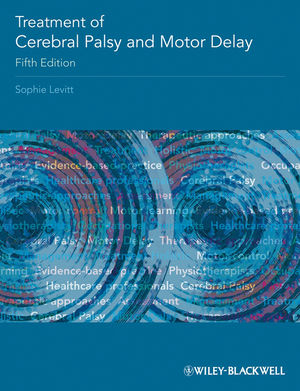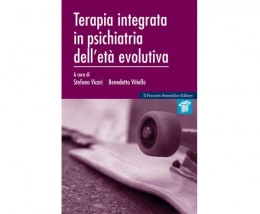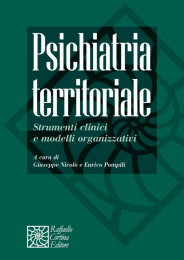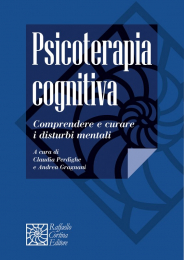Non ci sono recensioni
This fifth edition outlines therapeutic approaches and suggests treatment and management options, providing a wealth of practical information, supported by clear diagrams and photographs, on assessment, management and treatment. The book emphasises an eclectic, holistic approach, and integrates current ideas on motor control and motor learning in a further development of Levitt’s Collaborative Learning Approach. This new edition provides greater commentary on evidence-based practice, as well as practical, updated information on the use of Botulinum Toxin, orthopaedic surgery and the therapist's role following these procedures.
The book is aimed primarily at practitioners and students concerned with the developmental abilities and difficulties of children, particularly physiotherapists and occupational therapists working in paediatrics. Doctors and other healthcare professionals will also find useful insights in the book. Parents, families and also teachers of people with cerebral palsy can learn more about therapy by consulting the book together with their therapist.
- Written by an international authority in the field
- Extensively revised, updated and well referenced
- Emphasises an eclectic, functional and holistic approach
- Highly illustrated
- Promotes positive relationships between therapists, people with cerebral palsy and their families
From the Foreword:
“I greatly welcome the fifth edition of this book which brings together the management of cerebral palsies into a comprehensive but readable form… This book is in my view an essential part of both a therapist’s and doctor’s basic understanding of the subject… This book remains essential for those managing children with disability.’
—Brian Neville, Professor of Childhood Epilepsy, Professor of Paediatric Neurology ,University College London, Institute of Child Health/Great Ormond Street Hospital for Children NHS Trust.
Preface
Acknowledgements
1 The clinical picture for therapy and management
The motor dysfunction
Associated impairments and disabilities
Aetiology
Clinical picture and development
Classification
Spastic cerebral palsy
Athetoid (dyskinetic, dystonic) cerebral palsy
Ataxic cerebral palsy
Common features in all types of cerebral palsies
Motor delay
Principles of learning and therapy
Summary
2 A collaborative learning approach
Working with parents
Collaboration with other adults
The collaborative learning approach
Opportunities to discover what parents and child want to achieve
Opportunities to clarify what is needed for these achievements, to recognise what they already know and can do and to find out what they still need to learn and do
Participation in the selection and use of methods
Participation in the evaluation of progress
Parent–child interaction
Helping a child to learn motor control
Observation of parent and child interaction
Emotional support
Parents’ health
Teamwork with parents
Siblings
Records
Alternative and complementary treatments
Contraindications
Summary
3 Outline of treatment approaches
Muscle education and braces
Progressive pattern movements
Proprioceptive neuromuscular facilitations (PNF)
Neuromotor development
Neurodevelopmental treatment (Bobath approach)
Sensory stimulation for activation and inhibition
Reflex creeping and other reflex reactions
Conductive education
Sensory integration
Adjuncts to therapy
Systems-based task-oriented approach
Mobility opportunities via education (MOVE)
Contemporary theories
4 Evidence-based practice
Research and clinical studies
Research on treatment approaches
Theoretical grounds
Research studies
Reviews of research studies
Studies of specific treatment systems
Research on specific procedures
Other research
Clinical experience with evidence-based practice
The appraisal of research studies for therapy
5 Synthesis of treatment systems
The eclectic viewpoint in therapy
Synthesis of treatment systems
The postural mechanisms
Voluntary motion
Perceptual-motor function
principles for a synthesis of therapy systems
Developmental training
Treatment of abnormal tone
Training of movement patterns
Use of afferent stimuli
Management of deformity
6 Learning motor function
Learning methods
The development of a child’s attention and learning
Practical ideas to promote attention and learning
Learning a motor function
A child’s own goals and strategies
Task analysis
Cues for learning
Verbal guidance
Rewards
Practice and experience
Summary
7 The older person with cerebral palsy
Role of the physiotherapist and occupational therapist
Studies of function
Issues of concern in the older person
Motor abilities and self-care activities
Deformities
Healthy lifestyle
Develop appropriate community mobility
Training of self-care and cosmetic appearance
Knowledge about the condition
Therapeutic motor activities
Measures
8 Assessment for therapy and daily function
Approach to assessment
Assessment and measurements
Specific functional items
Measures of upper extremity and hand function
Methods of observation of gait
Grading in assessments
Additional assessment required
Records
Summary
9 Treatment procedures and management
Motor training
Motor development and the child with severe visual impairment
Prone development
Supine development
Development of sitting
Development of standing and walking
Abnormal postures in standing (see Figs 9.166–9.169)
Lower limb orthoses for standing and walking
Development of hand function
10 Motor function and the child’s daily life
Motor function in feeding, dressing, toileting, washing, bathing, play and communication
Motor function and perception
Motor function and communication, speech and language
Development of communication – brief summary
Development of feeding – brief summary
Development of dressing – brief summary
Development of play – brief outline
Techniques for carrying the child correctly (Figs 10.6–10.11)
11 Management of deformity
Causes of deformities and aims of therapy and management
Deformities and gait
Therapy and daily care
Review of deformities
Arm deformity
Deformities of trunk and neck
General considerations related to surgery
Pre-operative physiotherapy
Post-operative physiotherapy and care
12 Therapeutic group work
General management of groups
Selection of children
The programme
Summary
Appendix 1: Developmental levels
Physical ability assessment guide
Prone
Supine
Sitting
Standing and walking
Wheelchair use
Appendix 2: Equipment
Basic equipment
Aids to activities of daily living
General
References
Index




